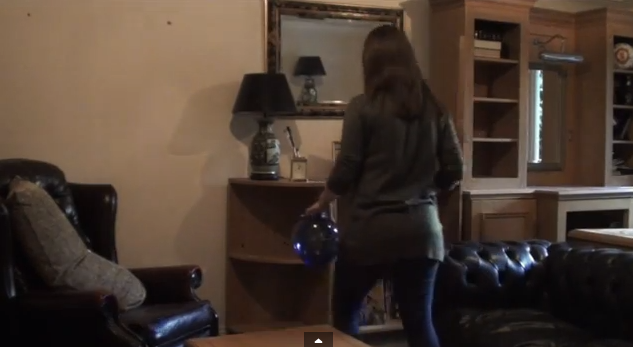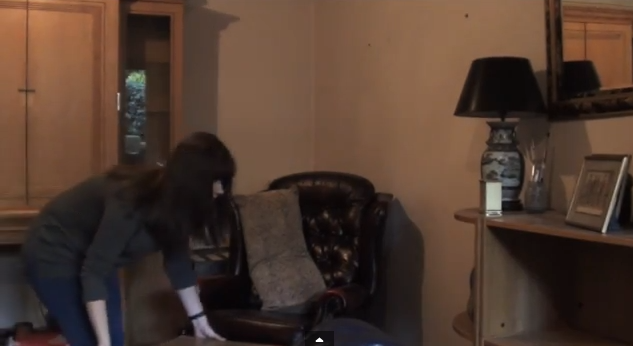Dear Moderator,
Film Introduction:
Q1. In what ways does your media product use, develop or challenge forms and conventions of real media products?
My name is Shona Reilly and this is my blog; it contains all of the work undertaken as part of the G321 AS Foundation Portfolio Unit within the OCR CGE course in Media Studies.
I chose to work by myself to produce a film opening in the thriller genre. The project lasted four months, commencing in September 2013 and cumulating in February / March 2014.
I hope you enjoy my work and find it both successful and interesting.
Please use the labels to the right to navigate between the stages of research and planning.
Yours thankfully,
Yours thankfully,
Shona Reilly
Film Introduction:
Note. Please watch on Youtube and in 1080p HD so it is in its highest quality.
Q1. In what ways does your media product use, develop or challenge forms and conventions of real media products?
Note. Please watch on Youtube and in 1080p HD so it is clearly readable.
Please click here if the embedded video does not work.
Q2. How does your media product represent particular social groups?
A still of the antagonist 'Mason' from the 2007 film Spiral and a still from my film 'Something More'.
Q3. What kind of media institution might distribute your media product and why?
(Because my film's genre is a thriller, it's the sort of film that would attract quite a wide audience, and because of its popularity, will bring an audience into the cinemas. My films story line is also quite unique with there not being many art based horror films on the market. In order to obtain a cinema release date, I would have to cast an a-list celebrity to the interesting role - the artist. In order to secure my chances of a cinema release, I would choose to approach Columbia Pictures – a film production company which is a subsidiary of The Sony Entertainment Group and has produced thrillers such as Salt (2010), The Tourist (2010) and The Girl with the Dragon Tattoo (2011), proving to be a very successful company with a variety of choices of film genre.
However, Twisted Pictures is more specific to my genre - thriller, having produced the film series 'SAW', they would be an amazing company to work with to produce my film world-wide due to the companies successes with the series.
If I were to specify my production company search further, I might at first only be able to distribute my film within the UK, so I would contact the smaller production company Hammer Film Productions which is a UK based film production company that only produces gothic thriller films such as The Quiet Ones (2014) and the famous, world wide block buster Woman In Black (2012). I chose this film company because of its experience as this shows confidence in the genre and the company would have good marketing techniques, appropriate to thrillers/horrors.)
However, Twisted Pictures is more specific to my genre - thriller, having produced the film series 'SAW', they would be an amazing company to work with to produce my film world-wide due to the companies successes with the series.
If I were to specify my production company search further, I might at first only be able to distribute my film within the UK, so I would contact the smaller production company Hammer Film Productions which is a UK based film production company that only produces gothic thriller films such as The Quiet Ones (2014) and the famous, world wide block buster Woman In Black (2012). I chose this film company because of its experience as this shows confidence in the genre and the company would have good marketing techniques, appropriate to thrillers/horrors.)
Q4. Who would be the audience for my media product?
I created a basic questionnaire consisting of these five questions to ten 16-19 year olds- my target audience. Thrillers do not consist of people which like certain types of music etc. compared to people who like Chick Flicks. They tend to prefer more mainstream, pop music and maybe dislike thrillers/horrors. This played to my advantage because I could then see how a wider audience, coming from many different 'clicks' would perceive my film.
I created a basic questionnaire consisting of these five questions to ten 16-19 year olds- my target audience. Thrillers do not consist of people which like certain types of music etc. compared to people who like Chick Flicks. They tend to prefer more mainstream, pop music and maybe dislike thrillers/horrors. This played to my advantage because I could then see how a wider audience, coming from many different 'clicks' would perceive my film.
Overall, I think the group of young adults I asked are my target audience due to the results above. The graphs show that they enjoyed my film and the general consensus was that they would like to watch the rest of the film.
Q5. How did you attract/address you audience?
Q6. What have you learnt about technologies from the process of constructing this project?
Note. Please watch on Youtube and in 1080p HD so it is in its highest quality.
Please click here if the embedded video does not work.
Q7. Looking back at you
preliminary task, what do you feel you have learnt in the progression from it
to full product?
The opening shot I can see that the camera was on a slight slant shown by the paneling on the wall and that her hair is slightly cut off, out of the frame.
We then see my example of match on action. I think I edited the two shots together well buy t there is a large contrast in distance making it seem unrealistic.

We then see my example of match on action. I think I edited the two shots together well buy t there is a large contrast in distance making it seem unrealistic.
I then pan across the classroom. I drag the subject through the shot well until the end when she does to sit down. By then, she has gone to the left of the shot, pulling the camera.

Here is my example of the 180º rule and shot reverse shot. I do keep to correct side of the subjects which shows I did apply to the rule. I kept the eye line between each character accurate by adjusting the height of the camera when switch characters.
 From my preliminary task, I also learnt how to use a lot of more complex types of shots, camera movements and editing such as:
From my preliminary task, I also learnt how to use a lot of more complex types of shots, camera movements and editing such as:
- Loose Frame- The mise en scene surrounding the character is visible, therefore the character/s in shot are not all that is clearly seen.
- Rule of Three- The frame is divided into nine. When shots use this rule, there are there points which are generally more pleasing to see: 1/3 the way up the frame, 1/3 and 2/3 horizontally along the frame. Here she is the in first vertical 1/3 and the bottom 1/3
- Cross Cutting- alternating shots cutting from one separate sequence to another, usually in a different location, time and person. Eg. shots of photo frames, boots etc.
- Cutaway- like cross cutting but it links to the sequence currently playing . Eg. My black and white shots
- Contrapuntal Sound- makes the audience question what they are seeing because at first, it does not match the action in the shot. Eg. My music is sinister and at first, it would not seem like it matches the calm and serene setting of the artist painting.













.jpg)


.gif)
